10 Traditional Chinese Mid-Autumn Festival Foods: Mooncakes and More
The Mid-Autumn Festival (中秋节, Zhong Qiu Jie) is an important traditional festival in China for family reunion, along with the Chinese New Year. And there are always delicious things to eat at a Chinese festival. What do the Chinese eat at the Mid-Autumn Festival? Except for mooncakes, many other traditional Chinese foods are also popular during the Mid-Autumn Festival. Let’s take a good at the top 10 traditional foods to eat at the Mid-Autumn Festival.
1. Mooncake (月饼)
Mooncake is the most popular festival food on Mid-Autumn Day. The Mid-Autumn Festival is also called the Chinese Mooncake Festival, from which you can tell that mooncakes place a really important role during the festival.
It’s a kind of sweet or savoury baked pastry with various fillings, such as red bean paste, lotus seed paste, jujube paste, salted duck eggs, yolks, ham, fruit, etc. Mooncakes usually are round-shaped just like a full moon, symbolizing family unity.
Warm Tip:
Tough mooncakes are delicious, they are high in sugar, fat, and energy. Please enjoy mooncakes in moderation.
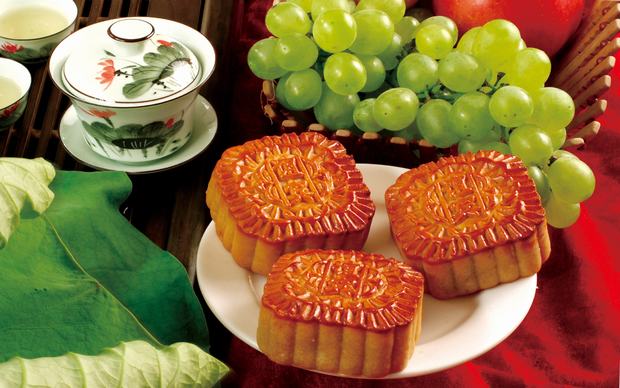
2. Duck (鸭子)
Duck is a must-have traditional main dish for the Mid-Autumn Festival dinner menu. Why do Chinese people eat duck during the Chinese Moon Festival?
Legend has it that in the late Yuan Dynasty, the Mongol rulers oppressed the Han people brutally, and the Han people decided to overthrow the Mongolian regime. But they could never let the authorities know about it, so they used code words. At that time, the Han people called the Mongols "Dazi" in private, and they took the homophonic "Duck" to refer to their enemies.
Everyone agreed that eating ducks at the Mid-Autumn Festival means taking action together on the Mid-Autumn Festival to launch an uprising against the rulers of the Yuan Dynasty. Later, the custom has been widespread all over the country.
Besides, in the autumn season, ducks are at their peak weight after a bountiful summer of eating. The succulent flesh of well-fatted ducks is very tasty. Moreover, eating duck during the fall is beneficial according to traditional Chinese dietary medicine. It can nourish your body to fight the dryness of the fall and winter.
Cooking methods of duck differ from place to place. In Sichuan Province, people enjoy smoke baked duck. The classic way to prepare duck in Jiangsu Province is to salt and bake it, and then seasoned with osmanthus flowers to add extra flavor. People in Fujian Province like to cook duck with taro.
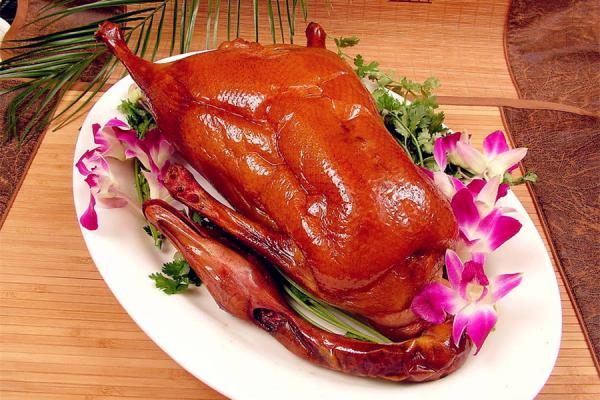
3. Crab (螃蟹)
Crab is another seasonal celebratory dish for the Mid-Autumn Festival dinner because crabs are going to be meaty as they get ready to hibernate around this time of the year. And female crabs are full of creamy and savory roes.
In the Shanghai area, people prefer steamed hairy crabs served with a dipping sauce of dark vinegar, ginger, and brown sugar. If you are traveling to the Shanghai region in September and October, you are recommended to try this local delicacy.
Eating crabs during the Moon Festival has been a tradition since ancient times. In the Ming Dynasty, steamed crabs wrapped in cattail bags were a delicacy at the royal banquet on the Mid-Autumn Festival.Crab meat is high in protein and low in fat and calories. However, crab is considered to be a cold food in terms of traditional Chinese medicine. People with weak stomachs should use caution.
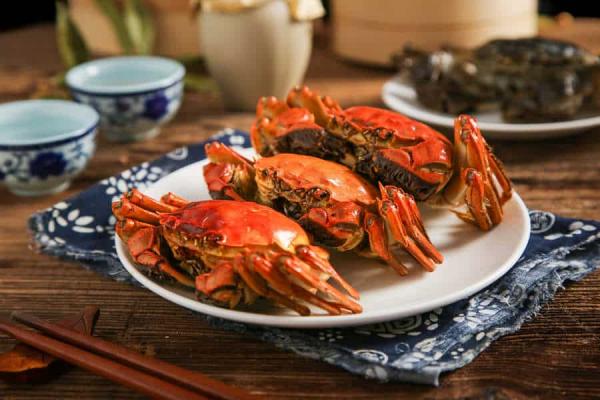
4. Taro (芋头)
Eating taro during the Mid-Autumn Festival is a long-standing tradition in many regions of China, which symbolizes warding off evil spirits and bringing good luck and wealth.
In ancient times, people often said "Appreciating the moon during the Mid-Autumn Festival, peeling taro to eat is like skinning the ghosts", which shows a courageous attitude towards life.
In the areas of Chaozhou and Shantou (East Guangdong), the 8th lunar month is the harvest time for taro roots. Local people also make it one type of sacrifice to worship their ancestors.
In Zhejiang and Jiangsu provinces, the pronunciation of taro is similar to the pronunciation of good luck. So this Mid-Autumn Festival food is not only a taste satisfaction but also a hope for good luck.
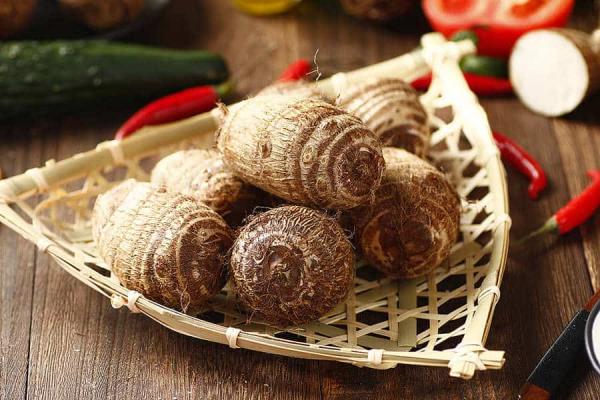
5. Lotus Root (莲藕)
Eating lotus roots during the Moon Festival has a long history in China. Firstly, Lotus root harvesting falls around the festival, and eating lotus root has many health benefits. The white, hollow lotus root is also high in fiber, vitamin C, and other trace elements. It helps to regulate blood sugar, prevent dryness and promote immune function.
Besides, the lotus root is full of symbolism in its name and texture. Its Chinese name, 莲藕 (lian ou), sounds the same as连偶, meaning togetherness of a pair. As for the texture, if you cut lotus root into parts, there are silky fibrous threads remains. And it’s hard to separate. It symbolizes a strong connection between people.
So, Chinese people think that by eating lotus roots at the Mid-Autumn Festival, couples would be on good terms and family members keep close relationships even after being separated by distance or disputes.
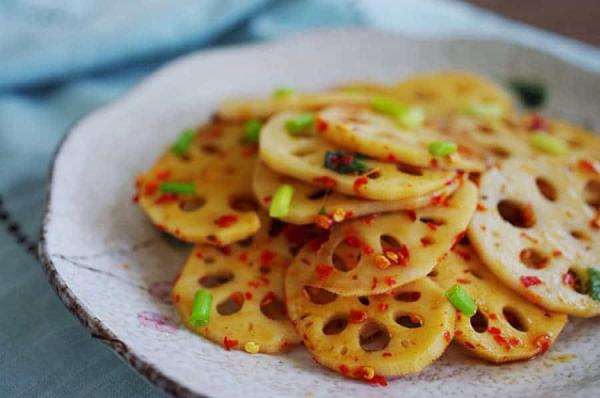
6. Pomelo (柚子)
Pomelo (Chinese grapefruit) is another popular Mid-Autumn Festival food because pomelo (柚, you) in Chinese is a homonym for blessing (佑), which means wishing the moon to bless you. Eating sweet moon cakes, together with some sweet and sour pomelo, is not only appetizing, but also refreshing.
7. Water Caltrop (菱角)
Eating water caltrop at the Mid-Autumn Festival is said to make children smarter. After eating sweet and greasy moon cakes, it is recommended to have a bowl of water caltrop porridge to remove greasiness in the stomach.
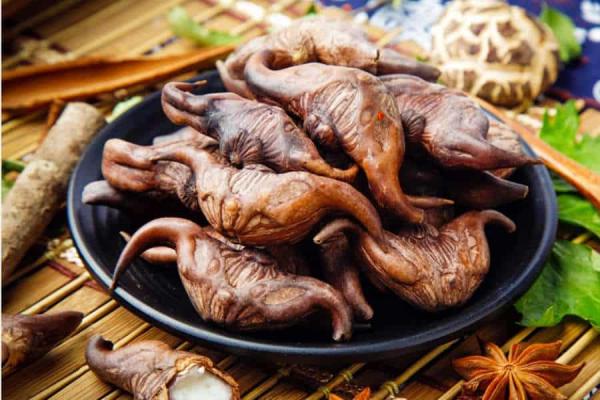
8. Chestnuts (板栗)
Here we have another must-eat Mid-autumn Festival food in China. During the middle autumn in China, the aroma of sugar-fried chestnuts begins to pervade the air on the streets. Chestnut, like taro roots, water caltrop, is also a must-eat snack during the Mid-Autumn Festival. Chinese traditional doctors believe that eating chestnuts is beneficial to the digestion system, which will invigorate the kidney and strengthen the muscles.
9. Osmanthus Wine (桂花酒)
Osmanthus is one of the 10 famous flowers in China. It has incredibly delicate, sweet, fruity-floral aroma and is used in perfumery, tea, desserts, and other foods.
As osmanthus is usually in bloom during the Mid-Autumn Festival, the festival is called Osmanthus Festival as well in China. It’s also in the season to make and drink traditional osmanthus wine. Chinese wine fermented with osmanthus flowers is light yellow with fragrance, tasting mellow, sweet, and sour.
The tradition of drinking osmanthus wine during the Moon Festival can be dated back to 2,000 years ago. “Alcohol (酒)” in Chinese is a homophone of “long-lasting (久)”. Therefore, drinking wine during the festival signifies family reunions, everlasting friendship, and happiness.
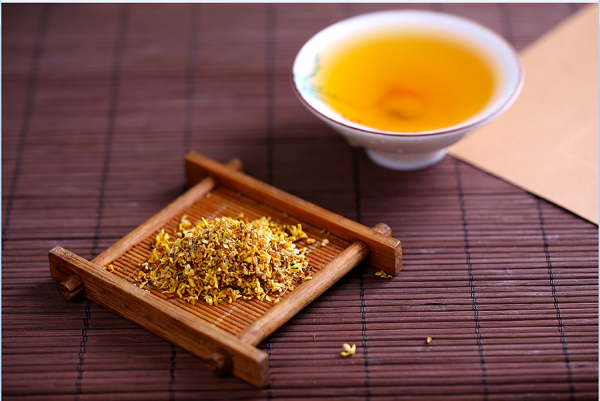
10. glutinous rice cake
The custom of eating glutinous rice cake on the fifteenth day of the eighth lunar month, i.e. the Mid-Autumn Festival, originated more than 2000 years ago during the Spring and Autumn and Warring States Periods. It was determined in honour of Wu Zixu, a great general of the state of Chu. Glutinous rice cake is a kind of token, and a holy food. The activity of eating glutinous rice cake and enjoying the full moon is a symbol of unity, happiness and good fortune for the whole family.


